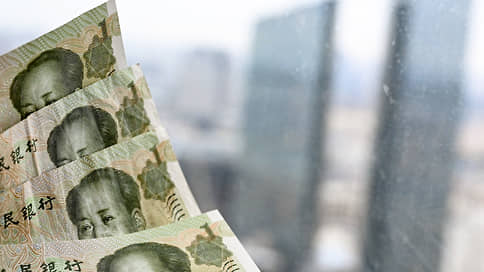Banks are observing rapid growth in the volume of yuan deposits of citizens
[ad_1]

Banks are observing a rapid increase in the volume of yuan deposits of citizens. At the end of 2023, household funds in yuan accounts and deposits increased several times. According to Kommersant’s estimates, the share of funds in non-toxic currencies, the main one of which remains the yuan, increased in the total volume of foreign currency deposits to more than 22%, doubling year on year. Based on the results of this year, banks expect the trend to continue; a limiting factor may be the high yield on ruble deposits.
At the end of 2023, individuals opened more than 32.1 thousand deposits in Chinese currency at VTB, the total portfolio volume exceeded 12.6 billion yuan, almost doubling over the year, the bank reported. As a result, the yuan took up 25% of clients’ foreign currency savings and became the second most popular foreign currency, displacing the euro. At the same time, “in the context of significantly increased rates on ruble deposits, the main demand of Russian depositors is now focused on instruments in the national currency,” VTB specified.
Olga Polyakova, Deputy Chairman of the Bank of Russia, at the banking forum in Sochi on September 28, 2023:
Our balance sheet structure has changed significantly, and devaluation, in general, has already occurred to a large extent
Other banks note similar dynamics. “In 2023, the number of monthly deposits opened by individuals in yuan has almost tripled compared to 2022,” Sberbank told Kommersant. “Since the beginning of 2023, quarter by quarter, we have seen an increase in the number of deposits opened in yuan. The share of the yuan is gradually growing – in the structure of the foreign exchange portfolio, the yuan now occupies 13%.” PSB depositors are increasingly using the Chinese currency to diversify their savings; the volume of attracting deposits in yuan is growing steadily every month, the bank noted.
According to Kommersant’s estimates, based on an analysis of banks’ monthly reports, the share of accounts and deposits of individuals in “friendly” currencies, the vast majority of which are the Chinese yuan, in the total foreign currency funds of citizens amounted to 22.9% as of January 1, 2023 versus 11. 68% on the same date a year earlier.
However, with the current high key rate, there are very few people who want to keep money in foreign currency in principle, Tinkoff Bank notes.
At the end of last year, against the backdrop of an increase in the Central Bank’s key rate and the subsequent increase in deposit yields, banks actually stopped regularly increasing rates on deposits in the yuan. As a result, in January of this year, only three banks increased the yield on deposits for citizens in current currency – PSB, GPB and St. Petersburg. According to Frank RG, at the moment the maximum return on deposits in foreign currency is 4.5%, the rate offered by MKB.
Significantly increased rates on ruble deposits ensured a significant influx into these savings instruments, explains Mikhail Doronkin, managing director of the NKR rating agency.
According to Anatoly Perfilyev, junior director for bank ratings at the Expert RA agency, currency restrictions are making the conditions for savings in foreign currencies less and less profitable. “At the same time, there is a change in the structure of foreign currency deposits in favor of the yuan: the total volume of deposits in Chinese currency doubled in 2023 and amounted to almost 69 billion in dollar equivalent, which is 6% higher than the volume of savings in US dollars,” he says. “Attracting yuan funds by banks, as a rule, has the goal of balancing the currency position for conducting active operations in China.”
To cover local needs for yuan in 2024, it is possible to increase the interest rate on corresponding deposits, but it is unlikely that in general this will be a significant change throughout the year, Mr. Perfilyev believes. Most likely, similar dynamics of yuan deposits will remain in 2024, given the still significant gap in rates with ruble deposits, Mikhail Doronkin believes: “Nevertheless, depositors will gradually convert part of their foreign currency savings into yuan, which will certainly support the market. As the key rate decreases, interest in yuan deposits may further increase.”
[ad_2]
Source link





